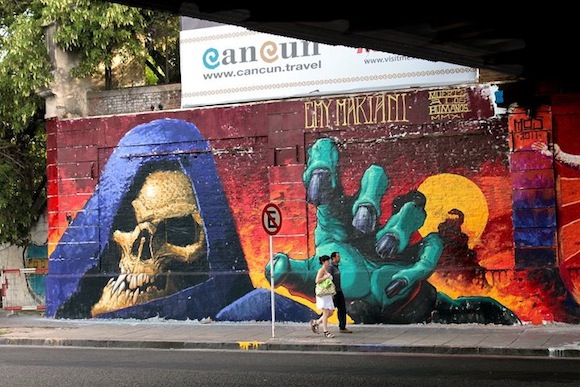Tick, Tick, Tick
 |
“How did it get so late so soon?”
-Dr. Seuss
|
I started this blog a couple months ago with the same words. This is a different ticking. It isn't frustrated anticipation. It is something else. Something I don't fully understand. Nostalgia, perhaps. Sadness. Now that time is limited, things feel different. Without a camera, I find myself taking mental snapshots of familiar places and moments. Tick, tick! Don't blink!
Unfortunately this week has begun in a haze of sickness. A cold attacked quite suddenly, meaning every minute I wasn't in class it was in bed leaking and dying. Hopefully I can battle through the next few days and explore some parts of the city I haven't yet.
 |
| Goodbye Dulce de Leche |
"Goodbye Buenos Aires"
Goodbye sweet Dulce de Leche, my love forevermore.
Goodbye awesome choripan place on Olleros and Libertador.
Goodbye rock stars Delta Venus and Hippidons.
Goodbye to the park and the swans (Not actually swans, they are geese, but at least they don't bite)
Goodbye barrio Chino
Goodbye cheap vino
Goodbye Spanish CLASSES
Goodbye flower wallpaper that sometimes dances.
Goodbye platform shoes, tall and fancy
Goodbye pretty ladies, I know you'll miss me.
Well I can't be too sure about that last part, but that's a poem. In my final weeks on the transit system I would write poems, dialogues, short stories, drawings, and a mix of all those to hand out to people. I can't take credit for the idea, I was inspired by a wise Colombian man. The experience of doing this has been so fulfilling, even though my poetry and art cannot possibly be any good. Still, it makes people smile. God knows, we all need to smile.
 |
What will I think of, when I think of my time in Buenos Aires? I will think of hip-hop Thursday at MOD. I will think of all the students from California in my class. I will also think about the hours spent reading and writing, trying to make sense of life. I will think of the naturally friendly Argentines that invited me into their homes and foods. I am more grateful than you can ever know.
For the most part, time melts solid memories. What will will eventually remain a year from now or ten years from now will not be specific days, it will be a feeling. What will that feeling be?
A little over 3 months is a weird amount of time to be in one place. You can only sink your roots in so deep before you get pulled back up. As much as I love this city, I am ready to keep moving. Time for this tumbleweed to keep on tumbling.The wind blows in the good airs. A change of direction is imminent.
To the east!
To Chile!
To Viña del Mar and my brother Ivan Alejandro Antivilo!
 |
| Through the vineyards of Mendoza, and the great Andes lies Valparaiso |
From there, plans are not yet concrete. My flight leaves from Peru July 1st, so I will eventually get there. What happens between now and then is a story not yet written. WWOOFing is the hope. At this point the blog will also take on a more narrative than information.




